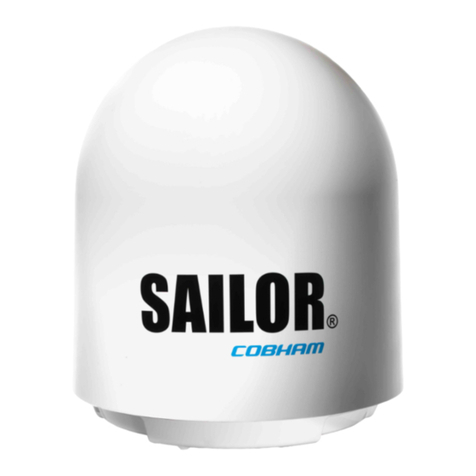TEST THE HEATER SYSTEM
1. Apply 240 VAC single phase power to the system.
2. Allow the sensor to go through its start-up test.
3. When the sensor enters the Automatic Enabled mode (steady green indicator), push the selector switch
twice to place the sensor in the Manual On mode (steady amber indicator).
4. Wait a few minutes and feel the surface of the reflector for warmth. The feedhorn heaters should also feel
warm to the touch. Retighten the feedhorn heater straps while the heaters are warmed and cut off all but ½” of
the excess strap material.
5. Return the system to the Automatic Enabled mode by pressing the selector switch one more time.
FINALIZE ALL OTHER INSTALLATION ISSUES
ANTI-ICE CONTROL SPECIFICATIONS
The control operates electric heaters to prevent the build-up of snow and ice on the reflector when conditions
are conducive to their formation. That is, during precipitation when the ambient temperature is below 40 F.
1. The controller will assure a minimum On time of approximately one hour. The system will continue to supply
heat as long as conditions warrant it.
2. The controller provides AUTO, OFF, and ON functions. These modes are user selectable through a single
push button switch which alternates through each mode.
- The normal power-up mode is AUTO. In this mode, the controller will turn on the heater contactor when
conditions are conducive to the formation of snow and ice.
- When in the OFF mode, the heater contactor remains disengaged regardless of the weather conditions.
- When in the ON mode, the heater contactor is engaged until the controller mode is changed or the power is
reset.
3. The control provides two indicator lights. The green indicator lights when the control is in the AUTO mode.
The yellow indicator lights when the heater contacts are closed and the heaters are on.
4. The moisture sensor is heated to melt snow and ice for detection as moisture.
5. The controller has been factory preset to operate on 240 volt single phase power.
6. The heater system draws approximately 8.9 amps.
7. The control is housed in a UL and CSA rated, weather resistant, gasketed enclosure.
Prodelin Gen.Dyn. 3.7 meter 240 Volt Half Coverage with Two C Band Heater System


























